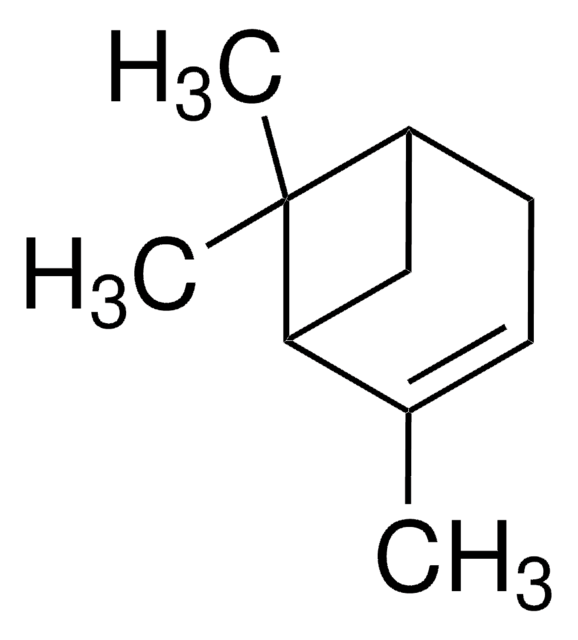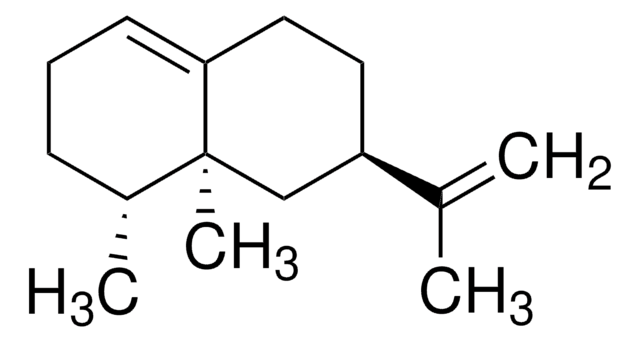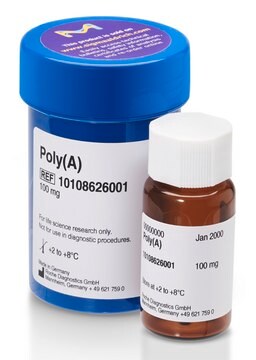A0410
Aminoallyl-dUTP sodium salt
≥85%, lyophilized powder
Sinônimo(s):
5-[3-Aminoallyl]-2′-deoxyuridine 5′-triphosphate, AA-dUTP
Faça loginpara ver os preços organizacionais e de contrato
About This Item
Fórmula empírica (Notação de Hill):
C12H20N3O14P3 · xNa+
Número CAS:
Peso molecular:
523.22 (free acid basis)
Número MDL:
Código UNSPSC:
41106305
NACRES:
NA.51
Produtos recomendados
Nível de qualidade
Ensaio
≥85%
Formulário
lyophilized powder
Condições de expedição
dry ice
temperatura de armazenamento
−70°C
cadeia de caracteres SMILES
[P](=O)(O[P](=O)(OCC1OC(CC1O)N2C=C(C(=O)NC2=O)\C=C\CN)O)(O[P](=O)(O)O)O.N
chave InChI
YWKTUHBZWBRYHX-TYYBGVCCSA-N
Procurando produtos similares? Visita Guia de comparação de produtos
Aplicação
Aminoallyl-dUTP may be used for indirect stable labeling of first-strand cDNA synthesis via polymerase chain reaction (PCR). Aminoallyl-dUTP functions as a reactive site for subsequent labeling by reactive fluorescent probes. Aminoallyl-dUTP may also be useful in the construction of reactive DNA scaffolds.
Aminoallyl-dUTP sodium salt has been used:
- to add to the deoxynucleoside triphosphate mix for complementary DNA (cDNA) synthesis
- for the generation of chromatin immunoprecipitation (ChIP) probes
- in the reverse transcription of RNA for the synthesis of fluorescent labelled probes
Ações bioquímicas/fisiológicas
Aminoallyl-dUTP sodium salt/5-(3-aminoallyl)-2′-deoxyuridine 5′-triphosphate (aa-dUTP) have been used mainly in two-step labeling approach for the synthesis of nucleic acid hybridisation probe.
Código de classe de armazenamento
11 - Combustible Solids
Classe de risco de água (WGK)
WGK 3
Ponto de fulgor (°F)
Not applicable
Ponto de fulgor (°C)
Not applicable
Equipamento de proteção individual
Eyeshields, Gloves, type N95 (US)
Escolha uma das versões mais recentes:
Já possui este produto?
Encontre a documentação dos produtos que você adquiriu recentemente na biblioteca de documentos.
Os clientes também visualizaram
Probe production for in situ hybridization by PCR and subsequent covalent labeling with fluorescent dyes.
Dirsch O, Ji Y, Bohr J, et al.
Appl. Immunohistochem., 15, 332-337 (2007)
W Gregory Cox et al.
BioTechniques, 36(1), 114-122 (2004-01-27)
Fluorescent nucleic acid hybridization probes traditionally have been generated by enzymatic incorporation of dye-labeled nucleotides, even though incorporation efficiency is low and variable from dye to dye. Alternatively, 5-(3-aminoallyl)-2'-deoxyuridine 5'-triphosphate (aa-dUTP) is enzymatically incorporated to generate amine-modified DNA, which is
Xue-Qin Gao et al.
World journal of gastroenterology, 13(3), 341-348 (2007-01-19)
To identify tumor associated genes of rectal cancer and to probe the application possibility of gene expression profiles for the classification of tumors. Rectal cancer tissues and their paired normal mucosa were obtained from patients undergoing surgical resection of rectal
Kevin K Fuller et al.
mBio, 4(2) (2013-03-28)
Light is a pervasive environmental factor that regulates development, stress resistance, and even virulence in numerous fungal species. Though much research has focused on signaling pathways in Aspergillus fumigatus, an understanding of how this pathogen responds to light is lacking.
Effect of the Colorless non-ripening mutation on cell wall biochemistry and gene expression during tomato fruit development and ripening
Eriksson E M, et al.
Plant Physiology, 136(4), 4184-4197 (2004)
Nossa equipe de cientistas tem experiência em todas as áreas de pesquisa, incluindo Life Sciences, ciência de materiais, síntese química, cromatografia, química analítica e muitas outras.
Entre em contato com a assistência técnica








